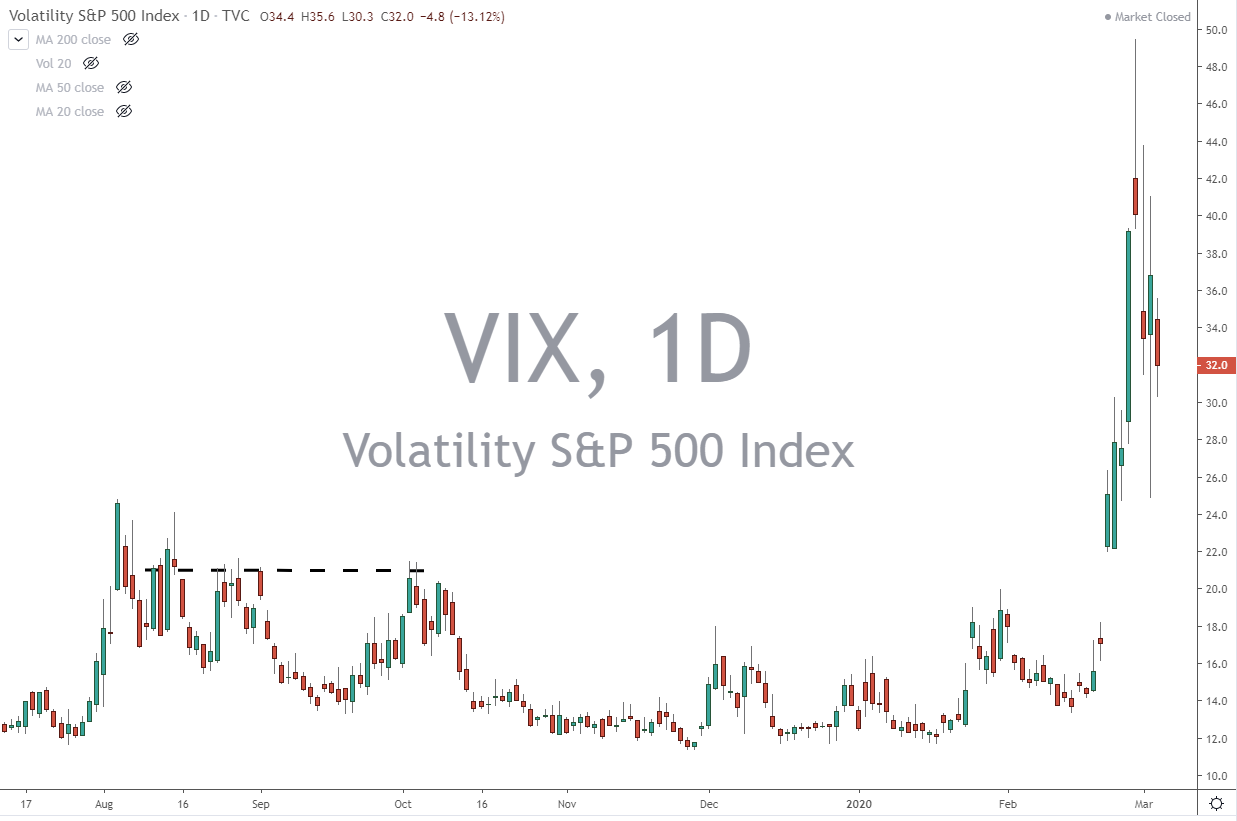Day Trading Adjustments for Volatility
How do you determine share size per trade? Is it documented in a written trading plan?
Day trade and risk go together, it’s tough to say one without the other.
The problem for most new day traders is they never learn to adjust risk with volatility. A $500 risk is not the same in every stock or from day-to-day.
Stocks have different volatility, known as average true range. This is the amount price action fluctuates from high to low (on average). New traders should assess risk tolerance, capital and decision making ability and coordinate these resources with volatility.
The truth is, new day traders can’t handle faster, wider movements. They have not learned to make good decisions yet. They don’t have enough experience.
This is one of the top reasons talented day traders fail. They trade too much volatility too soon. They are focused on potential profits before learning how to handle risk.
Day Trade and $500 Risk
I can’t tell you how many traders want to day trade $NFLX simply because it moves a lot. There is nothing wrong with this, if it fits your skills and risk parameters. A day trade in this stock with a risk of $500 can be wiped out in 5 minutes without choosing the correct combination of share size to stop-loss target.
From January 21-February 9, 2015 $NFLX had a 14 period average true range of @$16 per day. This means on average, over that 14 day window, the distance between the high and low was $16. For the majority of the month of March 2015, the ATR over the same averaged period was $11.
Or $5 less per day from high to low. The swings to day trade were “less volatile.”

$NFLX Weekly Chart
As volatility rises in your stock, you can reasonably expect wider swings from entry to stop-loss target. This means you can still risk $500 but you would allocate fewer shares to compensate for the difference.
Could you trade with a tight stop and usee the same shares? Yes, but you are setting yourself up to get stopped out on normal price action. You need to set your stop outside of this noise.
Day Trade Volatility Adjustment #2: The CBOE $VIX
This chart of the CBOE Volatility index demonstrates expected future volatility. It is also known as the fear index.
As the $VIX rises, volatility rises and selling pressure tends to increase.
Day trade lesson: You should monitor the reading of the $VIX and the trend of the $VIX so you can adjust share size to be in line with accepted risk. *This also means short-selling if there is an obvious up trend in the $VIX is a good play (assuming the stock in not in a valid uptrend)
Rules to Protect Capital While Taking Advantage of Wider Price Swings
#1: Pick a dollar amount you are willing to risk and then choose the correct amount of shares. The sign of an amateur is a day trader who trades the same amount of shares every trade. Reverse engineer the trade. Accept the risk in then determine how many shares based on the difference between your entry price and stop loss.
#2: Accept the risk and stick to it. Putting on a trade and accepting the risk is not the same thing. You are guilty if you have ever moved a stop loss. If your stop loss is going to get hit, let it get hit. Exit the trade and simply look for another spot to enter if the trade scenario is still valid. Under no circumstances should you add to a losing trade-especially in this environment with the increased volatility.
#3 Take quick profits: Increased volatility translates into wind-fall profits. Well executed trades can pay quickly. Be smart, don’t be greedy. You are a swing trader not an investor, take the profits and move on. If your profit target is reached in two days instead of seven book it!
#4: Learn to short-sell or stay out of a market decline. If the concept of earning money as the market moves lower is un-American to you or you simply don’t understand how it works, step aside and find a stock that has a bullish edge. You don’t need to be involved all the time.
Recap: Increased volatility means increased opportunity. If you are prepared with correct risk and disciplined, this can be an exciting time to day trade. If you are a new trader and not sure how to recognize this scenario make it a point to watch the $VIX. As it rises the average range of stocks increases. Adjust your share size lower in sync with a rising $VIX and you will have a sound money management plan.
Disclaimer: The lessons here are guidelines to consider for your unique resources and skills. All lessons and tips need to be considered in context. Good trading education provides a foundation for you to adapt into your trading plan.

